Next to the Amazon and Gisele, Brazil’s Carnaval celebrations are the country’s biggest claim to fame. In fact, the spirit of the season so enchanted me that I become an expat to the Cidade Maravilhosa just seven months after my first trip to Rio de Janiero. Here, a breakdown of what Carnaval's all about, how you can recreate it at home, and of course, what to make to eat.
Brazil’s Carnaval History
Under influence of European immigrants, the roots of Carnaval arrived in Brazil in approximately 1723. Originally, a celebration of street parades filled with masked and costumed partiers, it evolved in the nineteenth century to include decorated cars like those seen in today's celebratory atmosphere. Now, among the largest carnaval celebrations in the world, the spectacles around the South American country grow larger, more competitive and increasingly elaborate each year.
Celebrating Like a Local
The extravagant Carnaval parades (which take place this year from February 9 – 12) and Samba-dancing passistas may get most of the media attention, but street parties, known as blocos de rua, are where most of the celebration actually happens in the weeks before, during, and after the desfiles. These day-long booze fests typically travel through neighborhoods along a main street, trailing behind a double-decker truck topped with entertainers and VIPs.
Like many locals of New Orleans that I’ve met, the reverie of this annual fest has run its course for a lot Cariocas and Paulistas. In fact, a majority of residents enjoy their break from the grind and aim to escape the city’s chaos, either by traveling elsewhere or with a festa em casa. Friends, food, and fabulous drinks mixed with lots of samba are all you need to create the Carnaval vibe in your home, wherever in the world that may be.
Calling the Crowds
Even when it’s a home party to escape the masses on the street, a typical Brazilian gathering is anything but low-key. Set the festive mood for your party with a pretty invitation. Use an electronic greeting card so you can keep track of your invites — your Earth-friendly gesture might even save some trees in the Amazon while you’re at it! Try customizing the selection of Carnaval and Mardi Gras invites at Evite. If you’re looking for something a tad bit fancier, create one on Evite’s sister site Postmark and add your own customized envelope liner and stamp.
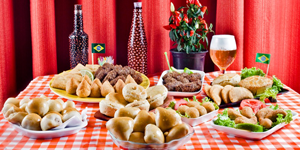
Salty Treats
Savory appetizers called salgadinhos are an everyday treat you can find most anywhere in Rio. They’re popular among Cariocas of any class, fried street-side in VW vans converted into mobile kitchens and served for inflated prices in upscale botecos. Kibbe, fried breaded cheese and empadinhas are a few you will typically nosh on at a home party. Empadinhas are little pies with a buttery crust and a moist, warm filling. Some of the most popular are hearts of palm, shrimp, and chicken.
Sugary Sweets
Like salgadinhos, a brigadeiro is a party-time staple for the sweet-toothed. They can be found individually-wrapped on gas station counters, in delicate cups at classy bakeries and by the handful at nearly every kid’s birthday bash. Best of all, you can make them yourself at home in a snap to kill those late-night chocolate cravings.
Cana Cocktail
Cachaça is the national spirit of Brazil but it’s easy to find stateside at most beverage retailers. If you want to spend more time socializing than slinging drinks, make a self-serve caipirinha de frutas bar and let your guests have a go as bartender. Start with a selection of diced fruit, separated into serving dishes with spoons for ladling. Add a bottle of the sugar cane beverage, ice and water, and you’re set. Add lime wedges for a classic spin on the drink, or substitute vodka for a smoother-tasting caipivodka.
Authentic Entertainment
For a free ticket to the arena without ever leaving your home, play the 2013 sambas de enredo on Radio UOL, featuring the music of a dozen top-ranked samba schools from Rio de Janeiro, known as the grupo especial. Each song’s lyrics represent the theme of the group’s 2013 parade floats and costumes – and will be sung repeatedly over 120 minutes alongside a bateria as the masse meanders through the sambódromo.
Hungry for more? A few recipes to get you started.
Cabana Caipirinha de Frutas (Cabana Fruit Caipirinha)
- 1 shot of Cabana Cachaça
- 2 tablespoons of granulated sugar
- 1/4 cup of sliced, diced fruit of your preference
- splash of filtered, still water
- 2 tablespoons olive oil
- 1 small onion, diced
- 1 tomato, diced
- 1/2 cup of diced green olives
- 2 cups of chicken breast, cooked and shredded
- 8 cups of all-purpose flour
- 18 ounces of margarine
- 4 eggs
- salt, to taste
- 2 egg yolks for brushing tops
Get the full recipe and ingredient list.
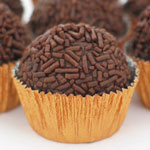
- 1 can of condensed milk
- 1 tablespoon of butter
- 3 tablespoons of powdered chocolate drink mix
- 1 cup of chocolate sprinkles
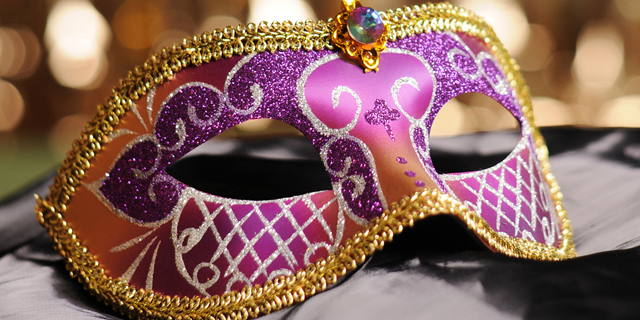
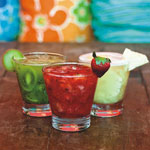
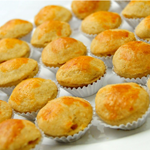

![Making Mealtime Matter with La Familia: Easy Sofrito [Video]](https://thelatinkitchen.com/wp-content/uploads/2015/10/sofrito-shutterstock__0-500x383.jpg)
![Easy Latin Smoothies: Goji Berry Smoothie [Video]](https://thelatinkitchen.com/wp-content/uploads/2015/12/goji_berry-shutterstock_-500x383.jpg)
















![Fun and Fast Recipes: Fiesta Cabbage Salad [Video]](https://thelatinkitchen.com/wp-content/uploads/2015/11/fiesta_cabbage_slaw-shutterstock_-500x383.jpg)









